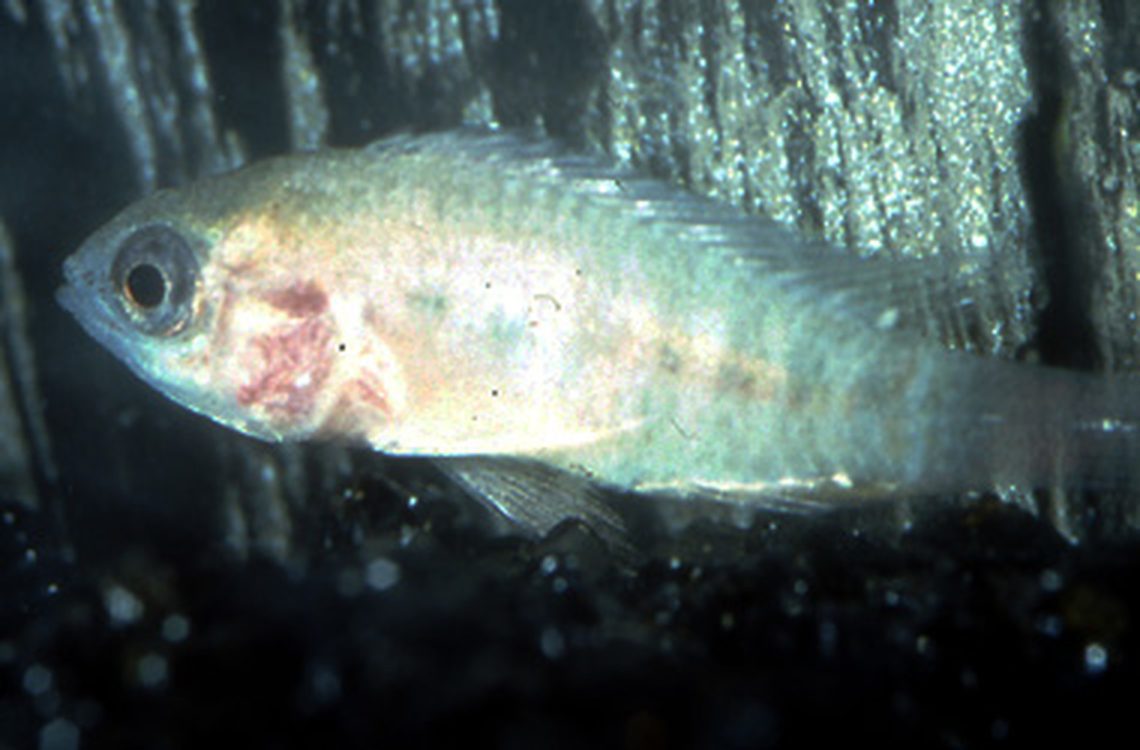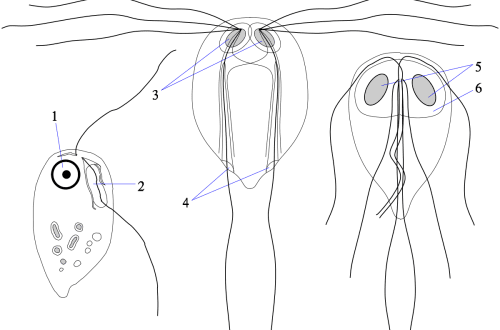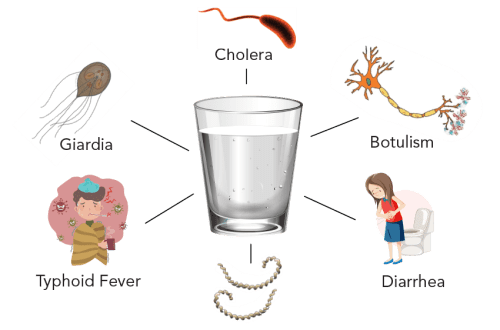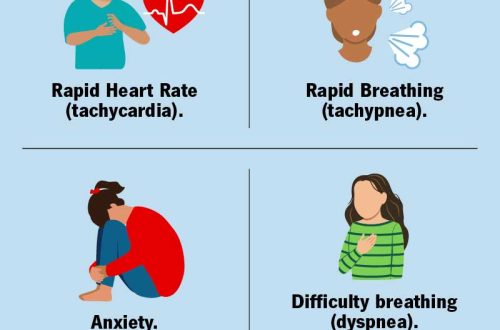
Skin and gill trematodes
Skin and gill trematodes are worms parasitizing on the body of fish, not visible with a simple glance (the size of adults rarely exceeds 1 mm), but through a magnifying glass they become clearly distinguishable.
For skin and gill trematodes, the fish is the only host; the entire life cycle from the larva to the adult parasite passes on it, this is due to the high rate of infection spread when sick fish enter the aquarium.
Symptoms:
The fish behave restlessly, try to scratch on objects, the fins are often pressed, redness can form on the body and a large amount of mucus is released. The behavior clearly indicates itching and skin irritation.
The reason for the appearance of parasites, potential dangers:
Trematodes are brought into the aquarium together with new fish, or are initially present in already acquired fish, so if parasites did not manifest themselves earlier and once an infection occurred, it means that the conditions in the aquarium worsened, which reduced immunity and provoked a numerical increase in the parasite population.
Severe infestation can lead to severe injuries, especially to the gills, as well as secondary infection with pathogenic bacteria or fungi.
Prevention:
It is extremely difficult to prevent infection with trematodes, at present they are ubiquitous and live on fish in small quantities, without manifesting themselves in any way. Quarantine allows you to identify only those fish that do not have acquired immunity, and they have recently been infected, in which case there will be characteristic symptoms.
The universal way to avoid infection (especially if the fish are already carriers of parasites) is to maintain the necessary conditions and high water quality in the aquarium.
Treatment:
The most effective way is the use of specialized drugs for parasites. Due to their wide variety and low cost, it is not advisable to use home remedies (for example, potassium permanganate). Infected fish should be placed in a medicated bath according to instructions or diluted directly into the aquarium. It should be remembered that in no case should the course of treatment be stopped earlier than the prescribed period, even if the fish looks healthy, since the medicine only acts on adults and larvae, and not on eggs. The full course allows you to process all generations of parasites, including those who hatch last.





